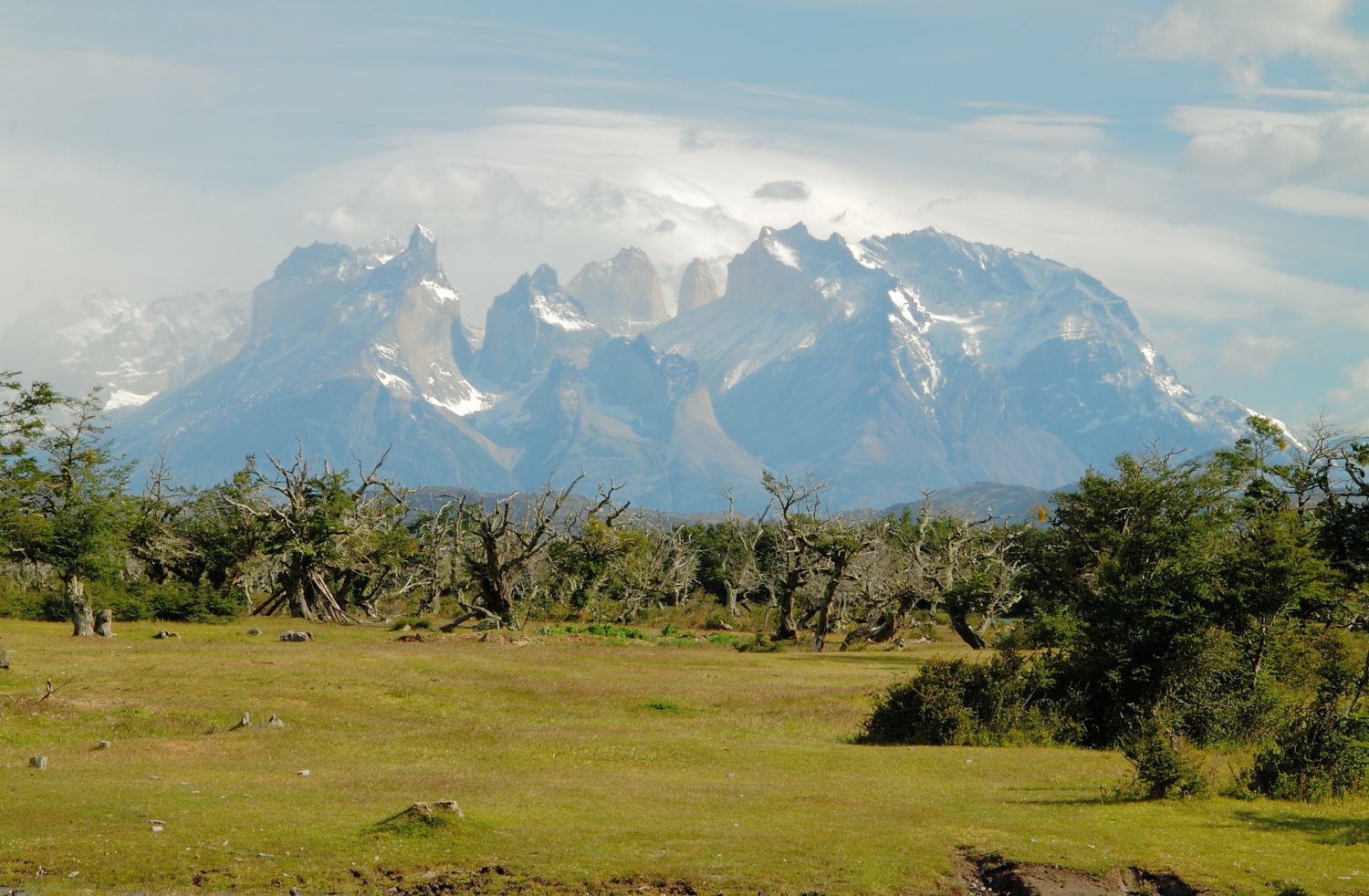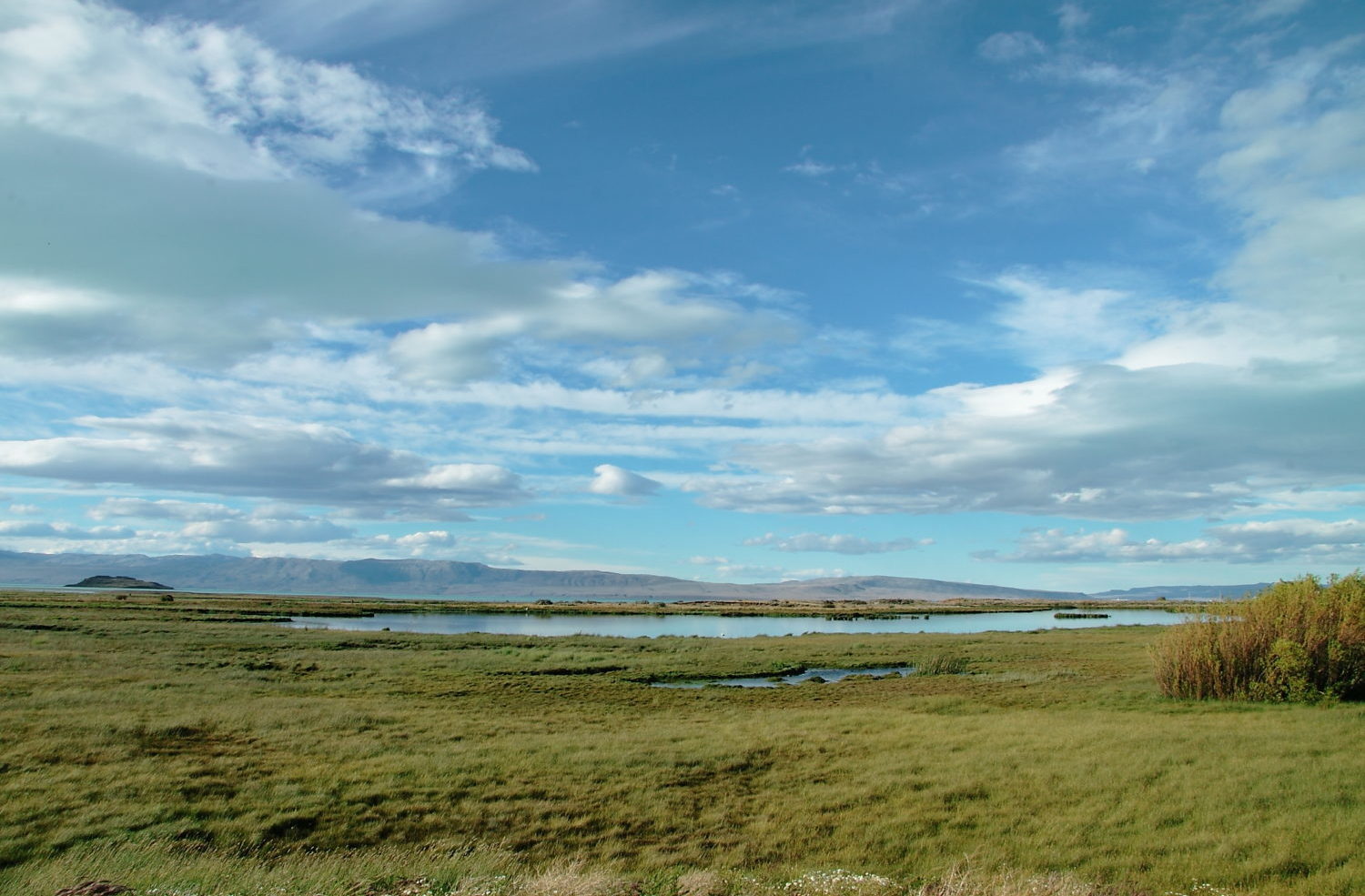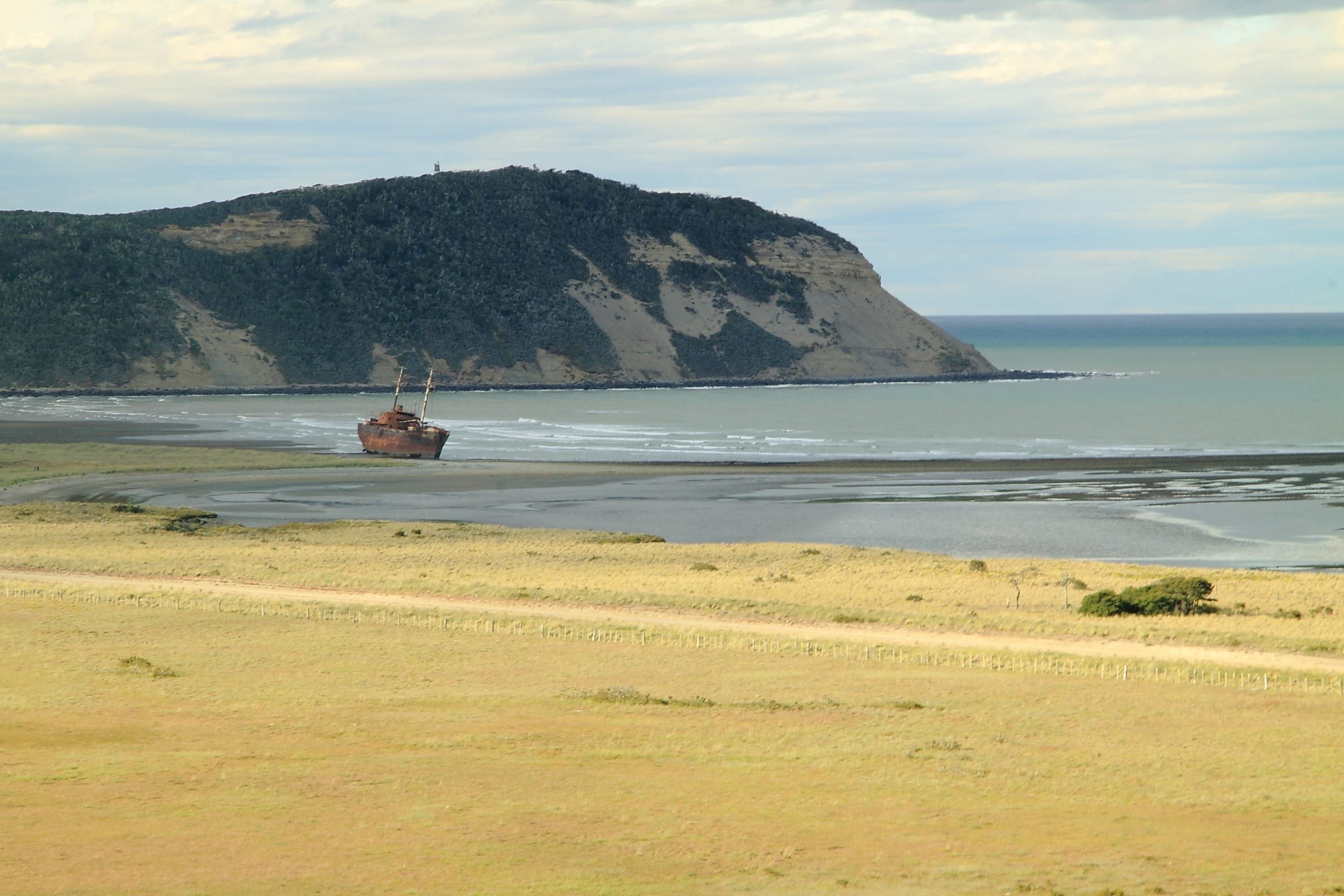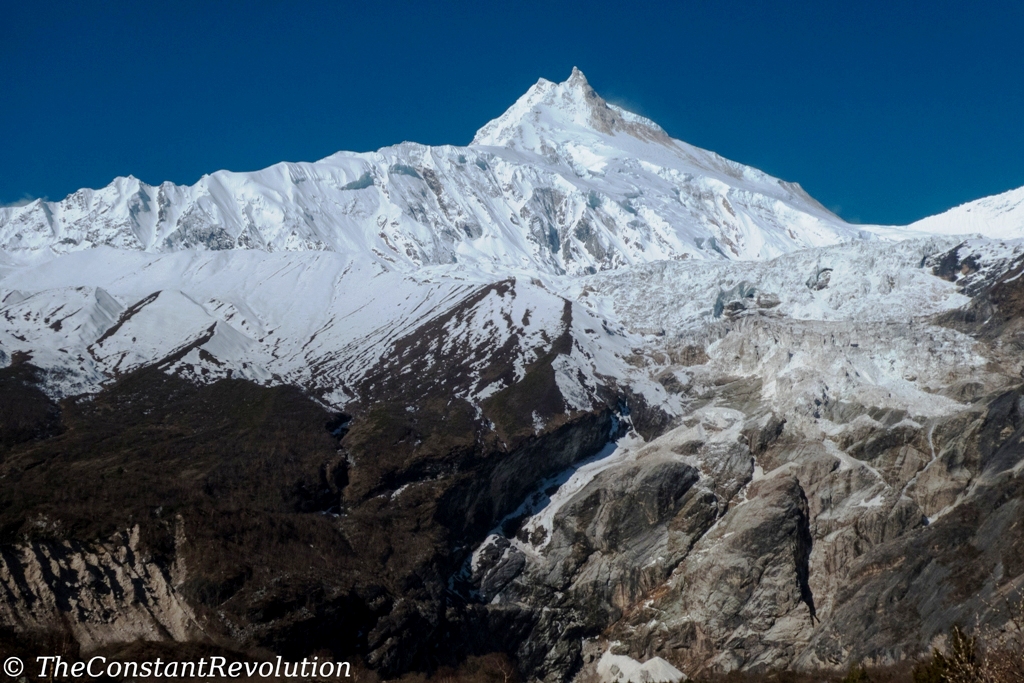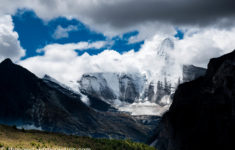Cachi, Cafayate, Humahuaca, Iruya, Purmamarca and the Salinas, this whole part of the country is a real jewel: fantastic and diverse scenery, few tourists, local cultures, good food and wine. For me it was a real surprise. I warmly reccomend this part of the country for a great road trip in Argentina.
I visited the North-West part of Argentina with a friend. From Salta we set off on a 10 days road trip that would pass by the famous Ruta 40 (a national route stretching from the far North to the far South of the country) and then up in the northern region.
A RARE BREATHTAKING MOMENT
There isn’t much to say about Salta, we stayed only the night of our arrival. It’s a cute little town, a perfect starting point to go visit the surroundings. It was my first night in Argentina and I was really looking forward to tasting the most celebrated Argentinian meat. So, we found a nice restaurant serving BBQ. No disappointments there, or anywhere else in the country to tell the truth: el bife de chorizo is up to its world-wide reputation. The following morning we headed to the car hire to be on the road as soon as possible. There’s a little story to tell about this car hire, but it happened when we took the car back, I’ll save it for later. For now, enough to say that we paid the full rent for the car in advance, and in cash.
Tip: in Salta (just like in the rest of the country) it’s possible to exchange cash, Euros or American Dollars, for favorable rates. This is not a good practice, and it is not advisable. But if you go for it, then watch out for frauds, and fish around before you accept any such deal.
So we get in the car, and we drive south, towards Cachi (F on the map) a small town on the Ruta 40, siding los Cardones national park. The first two hours or so are nothing special, the sky is grey, we are worried about the possibility of rain, and we are still somehow jet-lagged, so not so talkative. We are basically zigzagging uphill, waiting for something to happen. After one last left turn there it is.
The first and most unexpected surprise of the trip: the view suddenly opens up and we find ourselves on a 3000 m. high, incredibly vast plateau, with higher rounded mountains at the horizon, giant cactus scattered all around, and a single, deserted road cutting it right in the middle, in a straight line.
It’s a rare breathtaking moment, I literally feel my heart pounding, as though it were telling me “wake up, and look“. Besides the occasional coyote strolling by, we are completely alone on this long road, the sky is showing its bright face again, and some sun rays pierce through the clouds. So we go on, slowly, admiringly, and I am different than I was a few moments earlier.
The featured image of this post shows a little part of the plateau, although it doesn’t get even close to describing what the eyes could see. Perhaps because it was the first day on the road, or because this is not described so well in guidebooks and it was completely unexpected, but it remains one of the most memorable moments of the entire holiday. Which says a lot, because much has still to come.
CACHI TO CAFAYATE
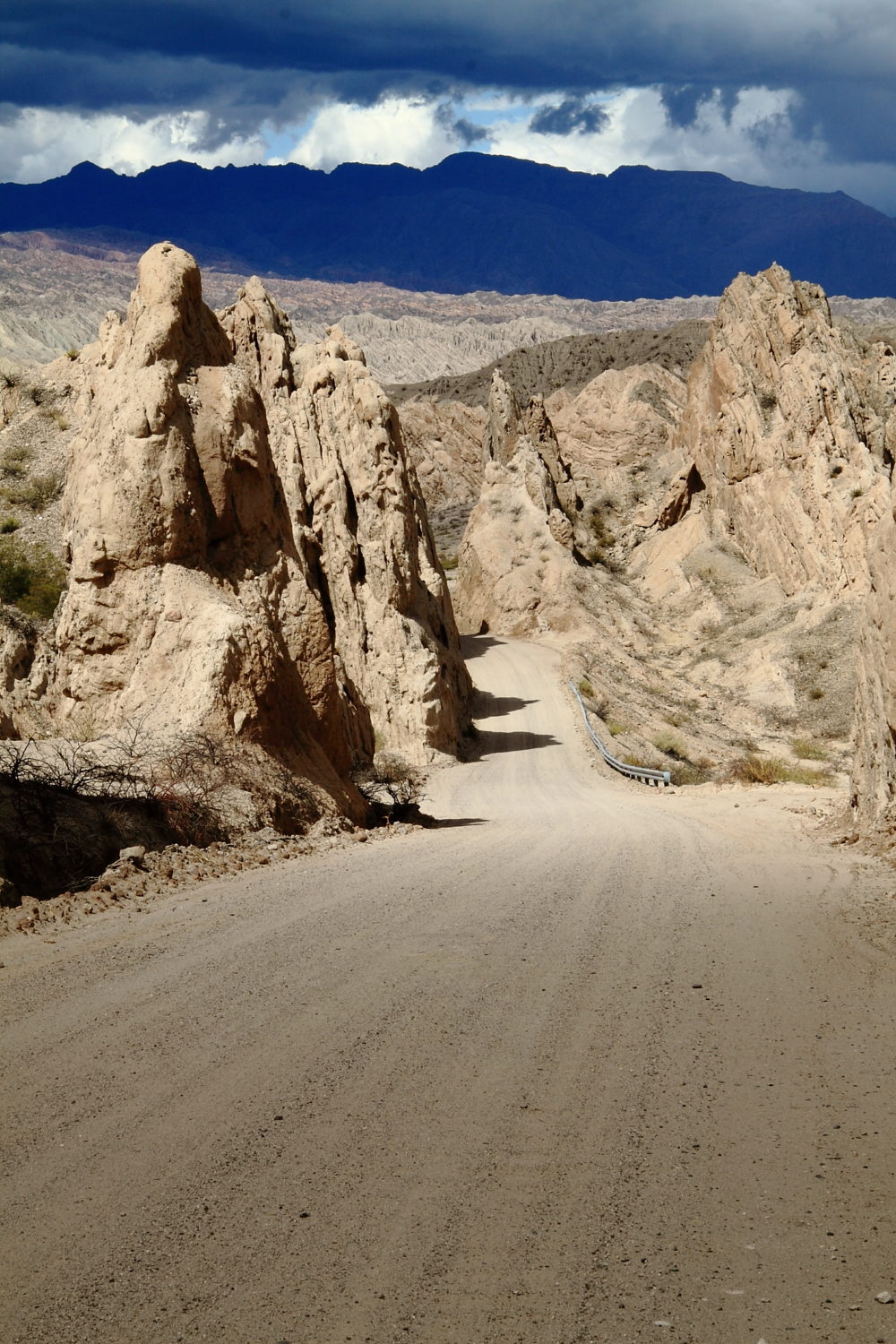 After a night spent in Cachi and a nice dinner, we kept driving on the Routa 40 towards Cafayate. This is a slow and mostly graveled road, with pointy wind-eroded rocks laying on the side. The dramatic landscape in front of us is magnificent!
After a night spent in Cachi and a nice dinner, we kept driving on the Routa 40 towards Cafayate. This is a slow and mostly graveled road, with pointy wind-eroded rocks laying on the side. The dramatic landscape in front of us is magnificent!
The next night would be in Cafayate, again a nice town, but nothing much to add, apart from the fact that we had the best wine of the entire trip. Cafayate is a much smaller wine region than, for example, the better known Mendoza. However, I found the quality of the wine superior here. Local cuisine is also interesting, if you are into stuff like Lama meat dishes or quinoa risotto.
Here we abandoned the short section of Routa 40 we traveled. By what I’ve seen though, it would be certainly worth driving the whole route South until Patagonia. But we didn’t have that kind of time, so we took a turn and pointed North, back towards Salta. The road took us through the Cafayate canyon, a series of rock formations with an intense red color, and multiple occasions to take great photos. We were basically stopping the car every few Km for a short stroll around the canyon.

QUEBRADA DE HUMAHUACA: MOUNTAINS IN COLOURS
We decide to go straight to the northern point we plan to reach with our rented car – Humahuaca – for then stopping by some other sites of interest at our return. The road is once again majestic, as it passes through a narrow mountain valley carved by the Rio Grande, about 150 Km long. The valley takes the name of the town we are heading to, Quebrada de Humahuaca.
All around we can see incredibly colourful mountains. One of the most amazing aspects of this is the grandeur of this mountain range: it’s high, earth colour, with cacti all over the place, and there are vast plateaus at altitudes that in Europe we can only dream about. I guess the scenery was particularly exotic to me, as I am used to Alpine landscapes, with green fields, pines, and hard limestone above them. Also beautiful of course, in a different way.
Detour: from Humahuaca is quite easy to organise a detour to go and see what the locals call the fourteen colours mountain. It cost around €20 per person. I didn’t count the colours to tell the truth, and it was quite cloudy when we went, but it’s a nice 40 min to one hour drive by four-wheeler up on some rounded ‘hills” (it’s above 4,300 m), from where the colourful peaks can be admired in all their splendor.

We ere lucky enough to arrive in town during a local music festival. So we took advantage of this to have a few drinks and try to blend in. There weren’t many tourists at all, and we were glad. Humahuaca and the whole Jujuy province in the North-West of Argentina are inhabited mostly by natives, with their music, clothes, food, and way of life. There is tourism of course, and tourist shops with cheap souvenirs etc. But the dimension of this reality is still small, at least when we were there.
The area has been inhabited for 10,000 years. Here is where the Incas built a series of trade routes in the mountains, that still today can be traveled only by foot, or with the assistance of donkeys and horses. We had a first hand experience of this. The whole Quebrada is also listed as a UNESCO world heritage site.
IRUYA – END OF THE ROAD
There’s a little village castled in the mountains, north from Humahuaca, from where it isn’t possible to continue on with any vehicles. The only way to reach other places is to walk, possibly follow some natives on their way to who knows where. This is what we did, for just a short stretch, because ours was a daily visit, and it would have taken days to see where those ancient and isolated routes would have taken us, and how life is, hidden behind those walls of rock. The temptation was there, powerful! Perhaps one day…
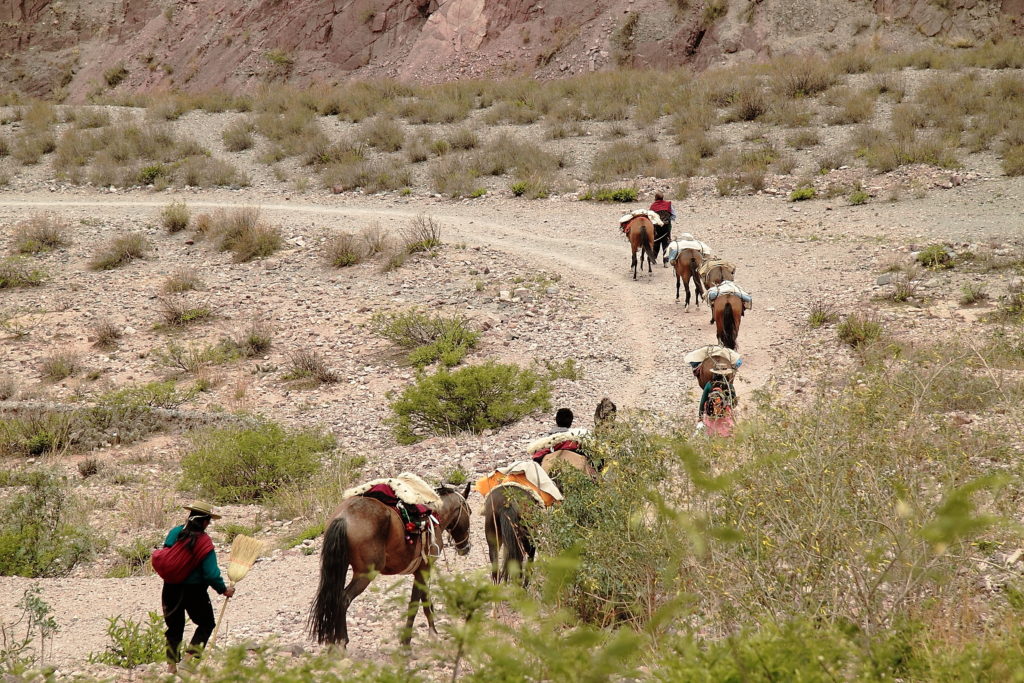
The magic of Iruya is not the village as such, which is cute, but it’s what it represents: the end of the road! After that, it’s all a mystery, unless you’re willing to go for a long trek. Unfortunately for us, we had a time schedule to respect. What a bummer!
The road to get there is actually very nice too. It isn’t possible to go with regular cars, so we had to leave our at Humahuaca, and go on a four-wheeler bus drive for two or three hours only to reach the village. This place is often considered a detour, in my opinion a worthwhile one. Actually, a must.
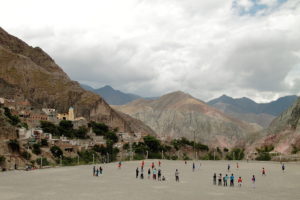

Corruption: on our way back from Humahuaca, we were stopped by two policemen at a checkpoint. They insisted there was something wrong with the car (not true!) and that we had to pay a fine, but in order to pay this fine, we had to go to a nearby city and spend the night there (which we really didn’t have the time to do). Long story short, after a far too long conversation in my shaky Spanish, during which none wanted to clearly state what was happening, I understood the fine could be paid “on site”. It wasn’t too expensive, but that’s not the point. It’s just unfortunate this kind of things happens. Nor should this be read as if this happens only in Argentina. On the contrary, it happens everywhere, certainly it can happen in Europe too. And every time it’s just as sad.
PURMAMARCA AND THE SALINAS GRANDES
We are by now on our way back to Salta, from where we would take a double night bus ride to go to Buenos Aires, passing by Cordoba. But before all that, there were still a couple of places we had to visit.
The first is Purmamarca, our last overnight stop. The town is small and welcoming, at the market street the occasional tangueros might perform open air, and it lays at the feet of yet another colourful mountain, this time a seven colour one! Unlike for Humahuaca, where it’s necessary to take a ride to get to see the landscape, here in Purmamarca it’s enough to go for an afternoon hike, usually at sunset. We were glad to stretch our legs after so much driving, so off we went, and up there we waited for the sun to go down and provide a warmer light for a rewarding view.


The second site we went to visit is also one of the most famous in the area, the Salinas Grande, a salt plane West of Purmamarca, which covers just a small part of a much vaster plateau. The road to get there is as usual full of twists and turns, and it goes up 4,500 m. before going over the pass, and show the Salinas far in the distance at 3,000 m. of altitude, with a dramatic scenery in the background.
To think that if we’d have kept driving, straight on the same road, we’d have ended up in Chile, close to the Atacama desert. The border is not too far, and, time permitting, it would be a very nice extra visit. We actually pondered this possibility for a while, but then decided to focus on Argentina, and leave Chile for another trip.

The white of the Salinas is absolute! It’s quite a surreal experience to walk around in this salty desert. Even photos turn out to have a surrealistic touch, because of the flatness of the land, and the uniformity and brightness of the colour. It’s fun to play around with perspectives and fun poses. Every shot seems photoshopped, as though the image of the person in the frame was added afterwards. Sunglasses and sunscreen highly advised!
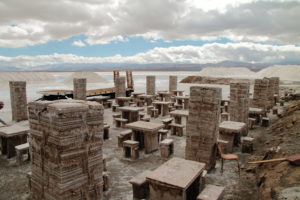
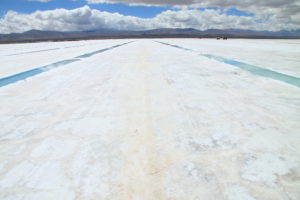
On our way to and back from the Salinas, we have spotted many Guanacos and Lamas 🙂

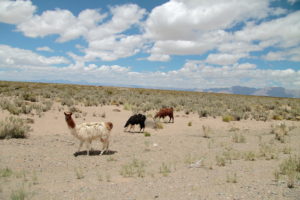
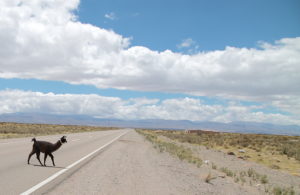
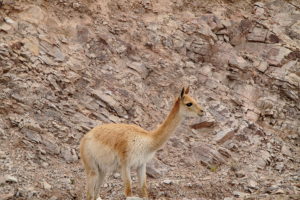
STORY OF THE RENTED CAR
With the Salinas, we ended our trip in the North-West of Argentina. I guess it’s clear I loved it! It’s just that everything was so different from the landscapes I am used to when I go trekking or travelling around mountains. The rest of the trip was also great, but this part, perhaps also because it was the beginning, is still very much vivid in my memory. So, the next posts might be much shorter 🙂
But before the final full stop, the promised story about the rented car. Here it goes: so, we go back to Salta, and to the car rental, which I will not name despite the temptation. We had no accidents, no problems at all, we just wanted to return the car. But the guy at the shop, the same who rented us the car, all of a sudden started telling us that we had not paid for the rental yet. Absolutely false! We paid everything in cash before leaving. But the smart ass didn’t mark it on the papers, so he could claim a second payment.
So begins a long and surreal dialogue/fight between me, him, his boss and my buddy where, in order: I insist we have already paid the rental, and no way we are going to pay for it again; he gets angry at upset, trying to look surprised, but when his boss comes, the real show starts: he starts whining, tears almost dropping down his cheeks, saying that if we don’t pay, he’ll have to pay with his own money; his boss pretty much listens, suspiciously not taking anyone’s side; and my buddy, who actually doesn’t remember if we paid or not, because I paid for the car rental, keeps taking me on the side to ask me (!) if I am sure I have paid, while at the same time getting nervous and replying to the car rental dude. The whole scene would be pretty funny to watch, I guess. Kind of four people each going his own direction. What a mess!
This goes on for a while, but I am adamant! I clearly remember the moment I paid, and it doesn’t take much insisting for the manager to give up and let us go. I find this even more suspicious, because if he thought his employee was right, he wouldn’t have let go so easily. The whole thing turned out to be a well designed scam, including tears and all, to get double rental out of a client. When they saw we weren’t giving up, and we were threatening to call the Police (not that I had so much trust in them after the ticket episode, but I had to call the bluff), they let go. Bottom line, if you pay a car rental in advance, especially if it’s in cash, always make sure that’s stated on the papers you sign! 🙂

Viva the transparency! There are affiliate links in this article. This means if you click on a link and end up buying (or booking) through those websites, I’ll get a small commission, at no extra cost to you. This helps me maintain the blog, and continue to provide (hopefully) useful travel information. I advertise only products I have tested and sites I use myself!

